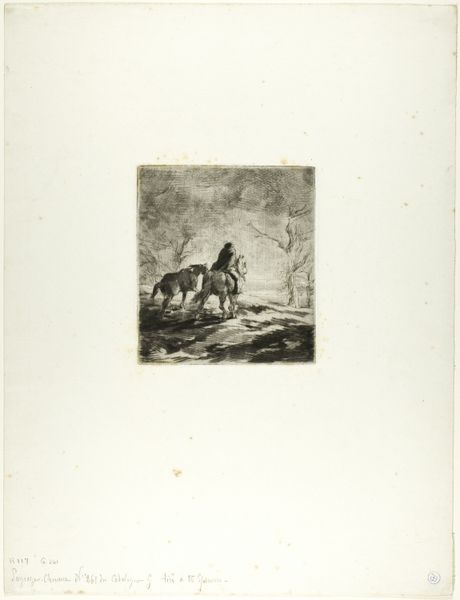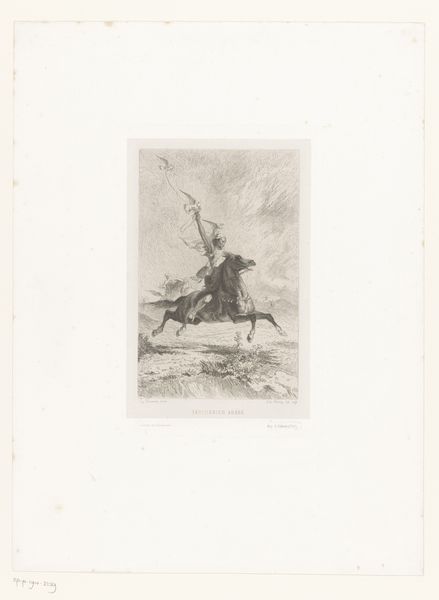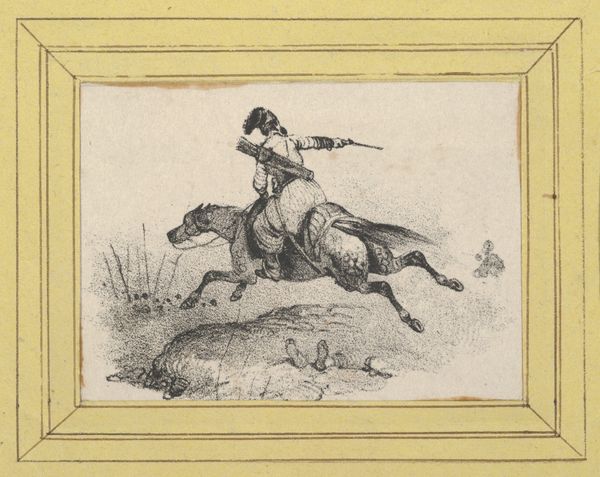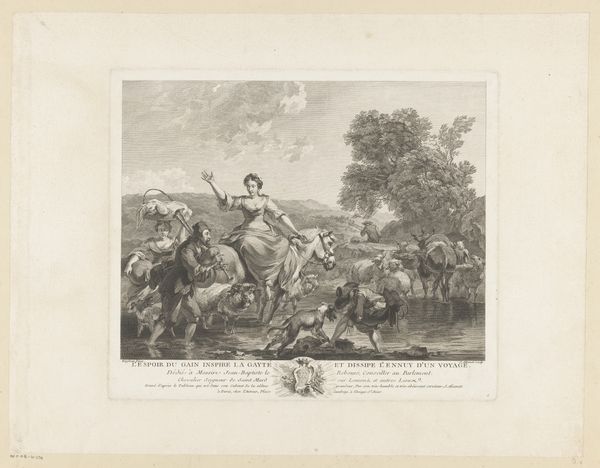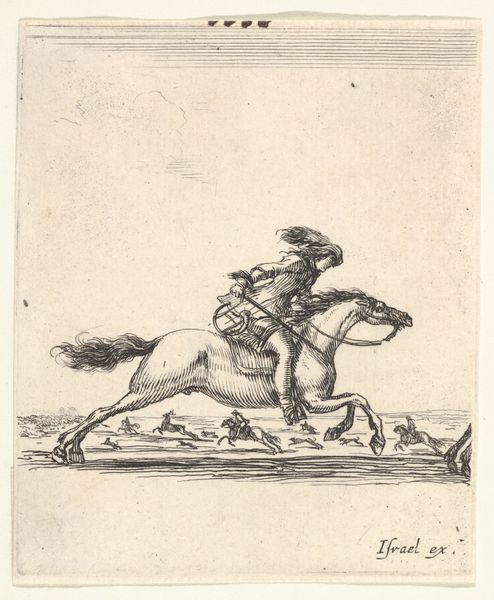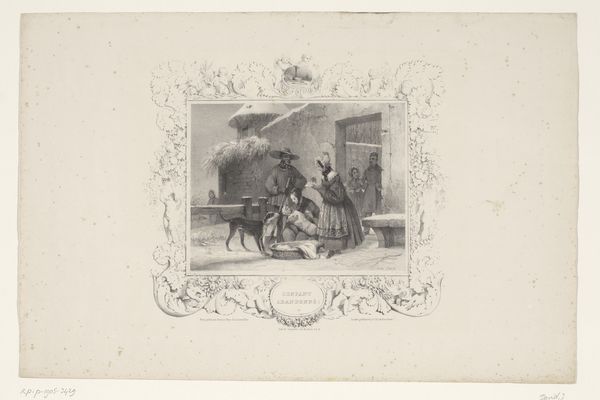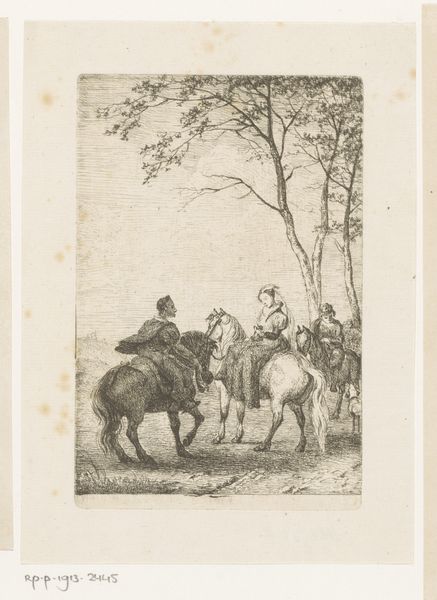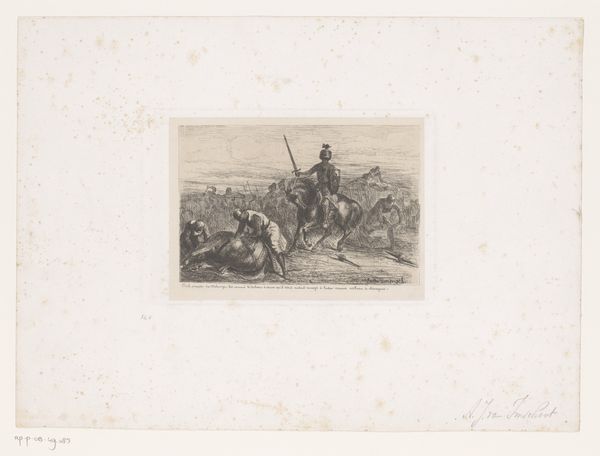
Dimensions: height 215 mm, width 182 mm
Copyright: Rijks Museum: Open Domain
Curator: Here we have Adam von Bartsch’s “Fight Between a Rider and a Soldier,” an engraving dating back to 1799, currently housed in the Rijksmuseum. It’s a dynamic historical scene captured within a circular frame. Editor: My first impression is chaotic. The frantic energy leaps off the page. The composition, especially within the circle, feels like a tightly wound spring about to burst. Curator: Indeed. As an engraving, the lines are everything. Consider how Bartsch uses cross-hatching to create depth and shadow, building volume where the figures clash. And how the circulation of these are influenced by line art. The means of its reproduction would enable a widespread access, catering to diverse consumption demands in revolutionary France. Editor: I'm struck by the figure on horseback, specifically, his sword high above ready to strike, contrasted with the figure being thrown beneath— a dynamic example that seems Baroque at heart, despite its later creation date. Note the horses as they express more tension compared to other design choices. The rendering of anatomy adds another layer. It is certainly in opposition of the ideals from 1799. Curator: Absolutely. Looking deeper at the period, engraving as a medium also speaks to print culture of the time, and also speaks to access to information and a larger scale production. There’s a clear tension here between high art and its proliferation via more 'democratic' means, reaching new audiences. Editor: But it is about more than just the historical context, though; you see how the artist uses contrasting light and shadow within the confines of this simple line art. How might you see them contrasted in the circular frame of our vision. In addition, the circular nature almost reminds us to examine the nature of how society may or may not continue into a new turn in history. Curator: You’ve got it. Think also about the availability of prints in revolutionary France, how images were tools for civic participation, protest, shaping ideas around revolution, and power. It also goes on the backs of its engravers; each part contributing a certain effort for this particular circulation of the subject. Editor: Looking again, notice how the artist focuses and emphasizes how to compose its parts. Consider what a challenge it may have been. Even though an interesting composition choice, do you consider how each aspect, within all this struggle, would play within our vision. Curator: And that tension makes this little engraving quite explosive. Thanks for bringing in such insightful formal consideration of the scene! Editor: My pleasure! This piece certainly benefits from considering multiple angles.
Comments
No comments
Be the first to comment and join the conversation on the ultimate creative platform.



